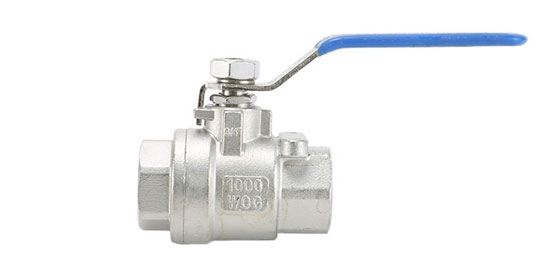How to Choose a Ball Valve?
What is a ball valve?
The ball valve is a valve that uses a ball with a circular channel as the opening and closing part, and the ball rotates with the valve stem to realize the opening and closing action. The opening and closing part of the ball valve is a ball with a hole, which rotates around the axis perpendicular to the channel, so as to achieve the purpose of opening and closing the channel. Ball valves are mainly used to open and close pipelines and equipment media.
The ball valve is evolved from the plug valve. It has the same 90 degree rotation lifting action, the difference is that the cock body is a sphere with a circular through hole or channel through its axis. The ratio of the spherical surface to the channel opening should be such that when the ball rotates 90 degrees, all spherical surfaces should appear at the inlet and outlet, thereby truncating the flow. The ball valve can be closed tightly with only a 90-degree rotation operation and a small torque. The completely equal valve body cavity provides a low resistance, straight-through flow path for the medium.
The opening and closing part of the ball valve is a sphere, and the purpose of opening and closing is realized by rotating the sphere 90 degrees around the axis of the valve stem. The ball valve has small flow resistance, simple structure, small volume, light weight, good sealing performance, convenient operation, rapid opening and closing, and is convenient for long-distance control. It is most suitable for switching and shut-off valves.

What are the materials of the ball valve?
Cast iron ball valve
Cast iron ball valves are mostly used in industrial pipelines, such as water, steam, air, oil and other media that are over normal temperature. To subdivision can also be divided into gray cast iron, ductile iron and other materials.
Stainless steel ball valve
Stainless steel ball valves are mostly used in medium and high pressure pipelines and have stronger temperature resistance. Stainless steel ball valves are mostly used in chemical, petrochemical, smelting and other industries. The common stainless steel ball valves are flanged ball valves and small-diameter ball valves with screw connections.
Copper ball valve
Copper ball valve mainly refers to the copper ball valve with threaded connection. This type of valve has a small diameter and is also a common valve in our daily life. It is mostly installed on HVAC pipes and used for superheated water.
Carbon steel ball valve
Carbon steel ball valves are suitable for low-pressure and small-diameter pipelines to cut off water flow and change the distribution of water flow or places where rapid opening and closing are required, and can also be used for fluid regulation and control. There is a strong shear force between the metal valve seats of the welded cemented carbide, which is especially suitable for media containing fibers, tiny solid particles, etc.
Plastic ball valve
Plastic ball valve is made of plastic as raw material. It is suitable for the closure of the conveying process with corrosive medium, and the temperature is -14℃~100℃, -40℃~140℃ according to different materials. All parts are assembled and molded by RPP or PVDF injection parts, which have excellent corrosion resistance. The sealing ring is F4, which has excellent corrosion resistance.
Ceramic ball valve
Ceramic ball valve is a new type of valve material. The thickness of the valve shell exceeds the standard data requirements of national standards GB, JB and American standard ANSl, and the chemical elements and mechanical properties of the main material meet the requirements of national standards. Currently used in thermal power generation, steel, petroleum, paper, biological engineering and other industries.
4 steps to choose a ball valve
Step 1: Determine the temperature range of the ball valve
Valves are often used for the treatment of hot or cold fluids. It is very important to determine whether the flow rate through the valve of the medium is low or high temperature, and there are different materials such as ceramics, stainless steel, and PVC used in valve production. Each of them is suitable for a specific temperature range.
Step 2: Determine the working pressure of the ball valve
When a high pressure valve closes, you want to determine how much pressure is in the range in order to select the correct valve size to handle that pressure.
Step 3: Determine what medium is passing through the ball valve
Specific applications and fluid control systems are designed to handle different types of media. Some valves are used against dams and reservoirs. Also used for normal flow of chemicals. There are also special designs for radioactive substances to ensure that the valve does not leak radiation. It is also important to ensure that the fluid passing through the valve is corrosive. These are helpful for the selection of valve body material. This step is also used to ensure the safety of the staff at the valve.
Step 4: Determine the volume of fluid passing through the ball valve
Different flow valves are designed for different purposes, too small or too thick are not suitable, because the correct choice of valve size in order to know the volume of fluid is very important.
The ball valve is mainly used to cut off, distribute and change the flow direction of the medium on the pipeline. The ball valve designed with V-shaped opening also has a good flow adjustment function. ATO offers one piece, two pieces, three pieces of ball valves, sizes are available in 1", 1/4", 2" and 3".

